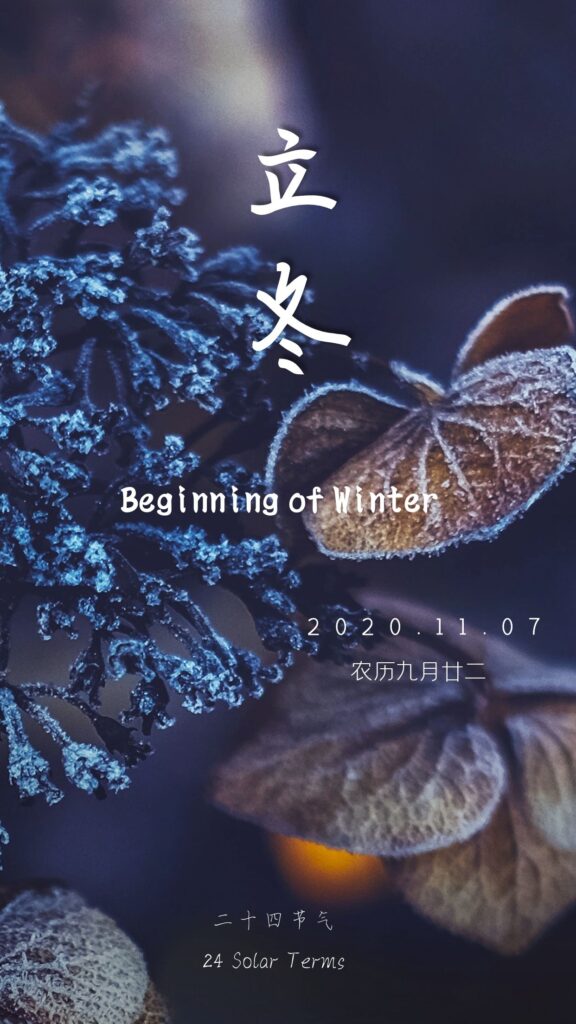
November 7, or the 22nd of the ninth month of Chinese lunar calendar, is the nineteenth solar term – Lidong (Beginning of Winter). As the name suggests, it marks a time when water starts to freeze and all beings prepare for winterization, while It is also when autumn harvest is finished and winter crops are planted.
Winter Nourishment
Winter nourishment is essential at the beginning of winter. In North China, people eat dumplings and mutton hot pot, a tradition passed down from the imperial court of the Qing dynasty. In South China, people are more inclined to have all kinds of meat stewed with traditional Chinese herbs and other high-calorie food.
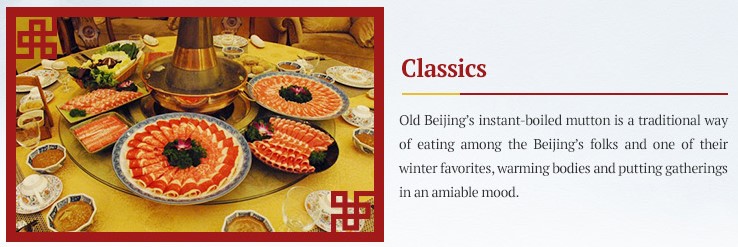
涮羊肉 Beijing Mutton Hot Pot
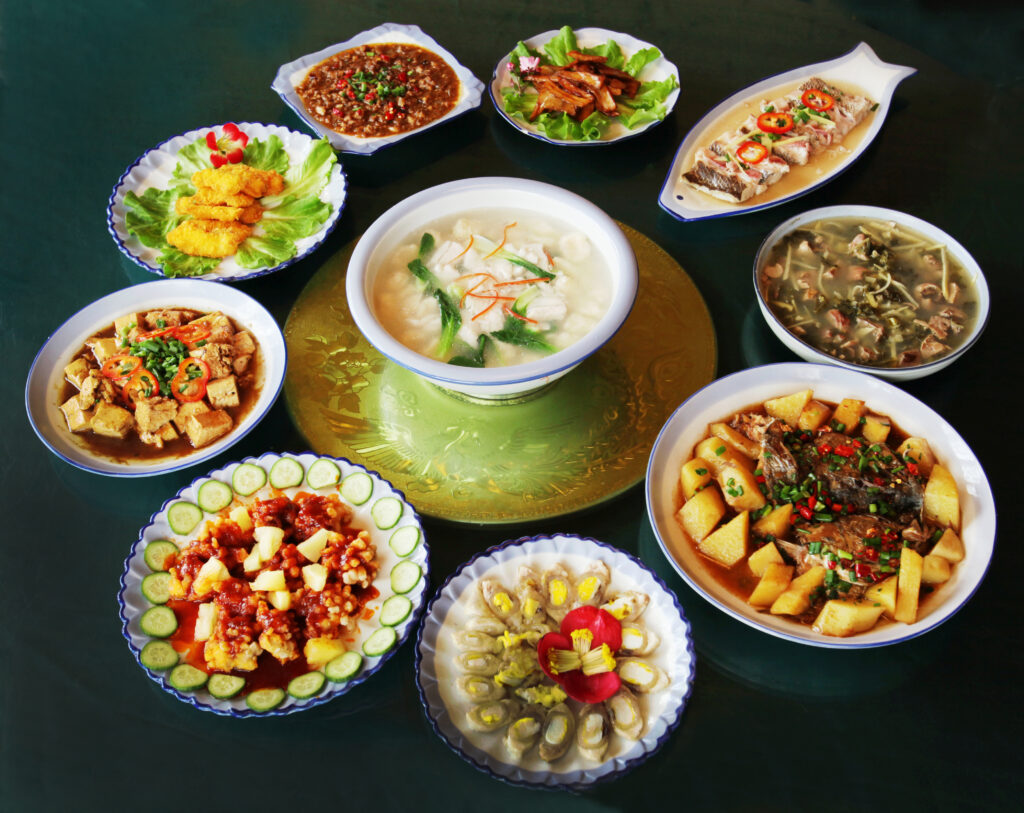
定海 鮸鱼十吃 Croaker Cooked in Ten Ways, Dinghai, Zhejiang

江山白鹅 Jiangshan stewed goose
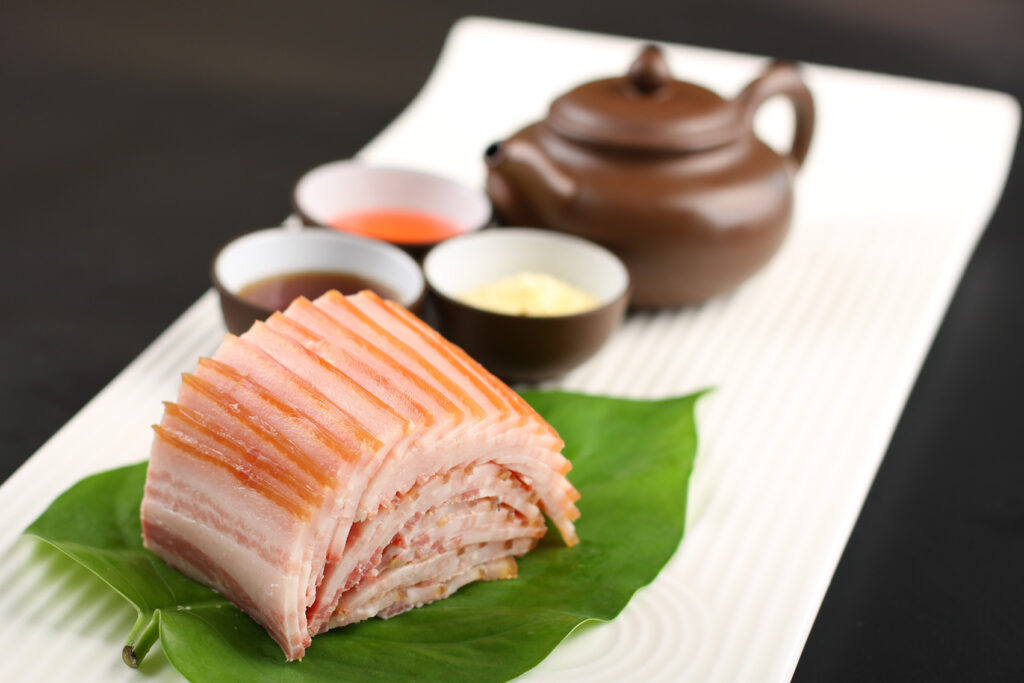
开化腊肉 Kaihua cured meat
Brew yellow rice wine
It is a popular and time-honored tradition that people brew winter liquors after Lidong, among which Shaoxing Yellow Rice Wine is the most famous. Lidong is the time when fermentation of Shaoxing wine begins. Clear water and low temperature in winter can effectively prevent bacteria contamination to ensure successful fermentation and a satisfactory flavor in the process of long-term low-temperature fermentation. Therefore, Shaoxing people engage in “winter brewing” from Lidong (Beginning of Winter) to Lichun (Beginning of Spring) in the next year, the most suitable time for making yellow rice wine.
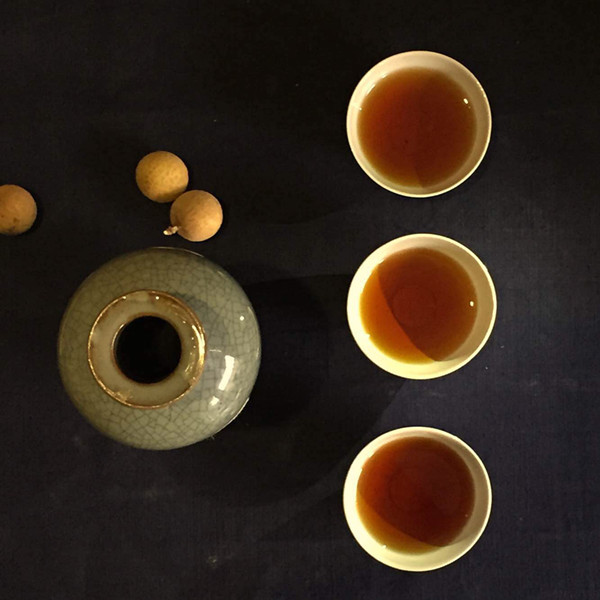
绍兴黄酒 Shaoxing wine
Yellow rice wine is one of the oldest types of beverage wine in the world, known as the Three Ancient Alcoholic Drinks together with beer and grape wine. Originated in China, yellow rice wine can be divided into many varieties according to the origin, raw materials, types of distiller’s yeast and sugar content etc., among which Shaoxing wine is the most typical brand.
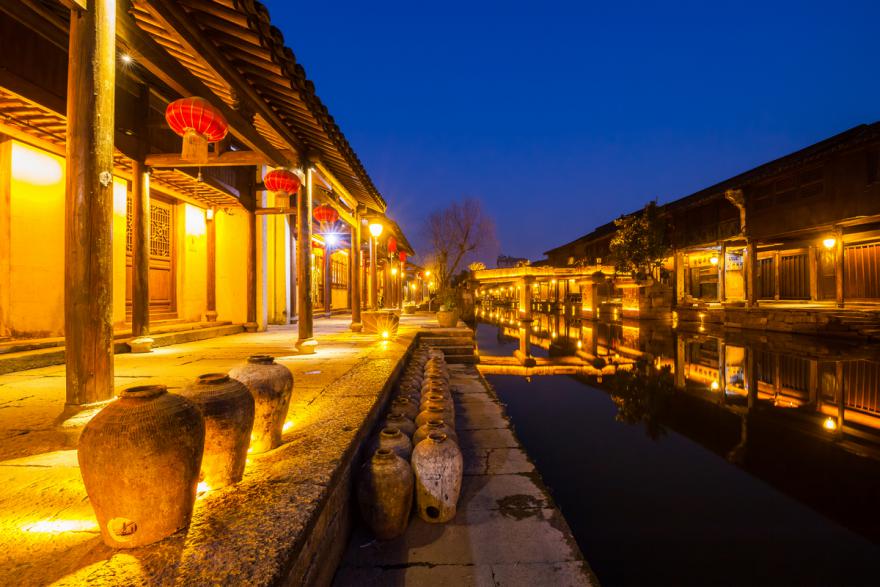
绍兴黄酒小镇 Shaoxing Rice Wine Town
Shaoxing enjoys a long history of wine making. It is a technique inherited and developed by ancestors in the State of Yue with written records dating back to the Spring and Autumn period and Warring States period. In 2006, Shaoxing wine making technique was listed as a national intangible cultural heritage. Fertile land, mild climate, abundant sunshine and rich and high-quality water source of Jianhu Lake make Shaoxing a favorable place to brew wine.

酒坛 Wine jar
For thousands of years, wine is infused with poetic sentiment and poetry breathes vitality into wine. At the Orchid Pavilion (Lanting) in Shaoxing in the ninth year under the reign of Emperor Mu of Eastern Jin dynasty (A.D. 353), one of the most celebrated literati gatherings took place and was recorded in the Preface to the Poems Composed at the Orchid Pavilion written by the most eminent Chinese calligrapher Wang Xizhi. They engaged in “Qu Shui Liu Shang”, an ancient game derived from the customs of Double Third Festival since Zhou dynasty. They sat by a winding stream, put cups full of wine in the water and let them flow. Whoever had the cup stopped in front of him would drink it and create a poem. The original calligraphy work of the Preface is yet to be found, however, the copy by a calligrapher of the Tang dynasty Feng Chengsu is the most acknowledged version. The gathering has thereafter become the theme of many artistic creations.
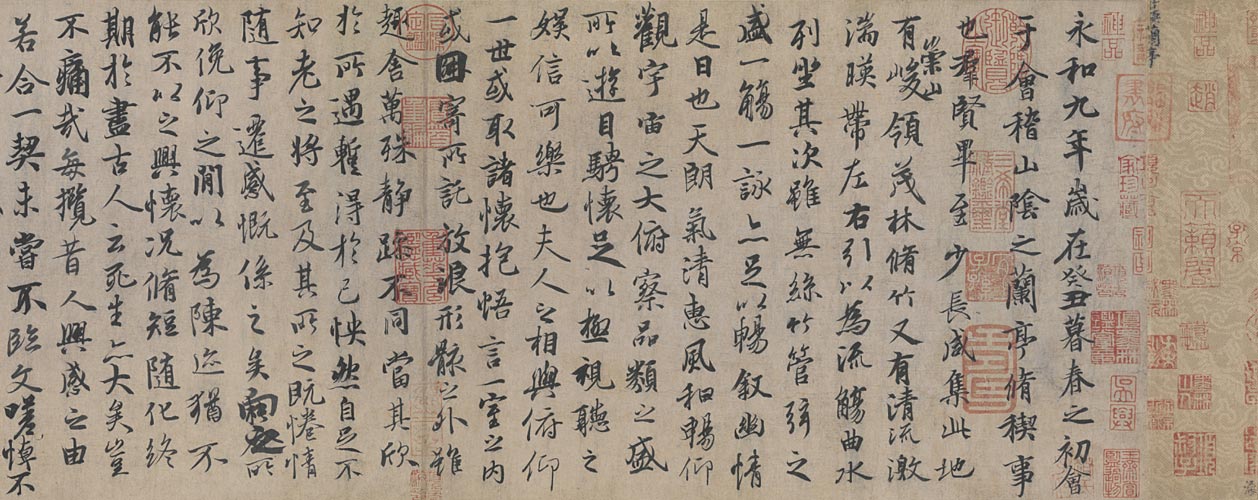
《冯摹兰亭序》Preface to the Poems Composed at the Orchid Pavilion, Tang dynasty, Feng Chengsu
Semi-cursive script on paper, 24.5 cm x 69.9 cm
Now in the collection of the Palace Museum
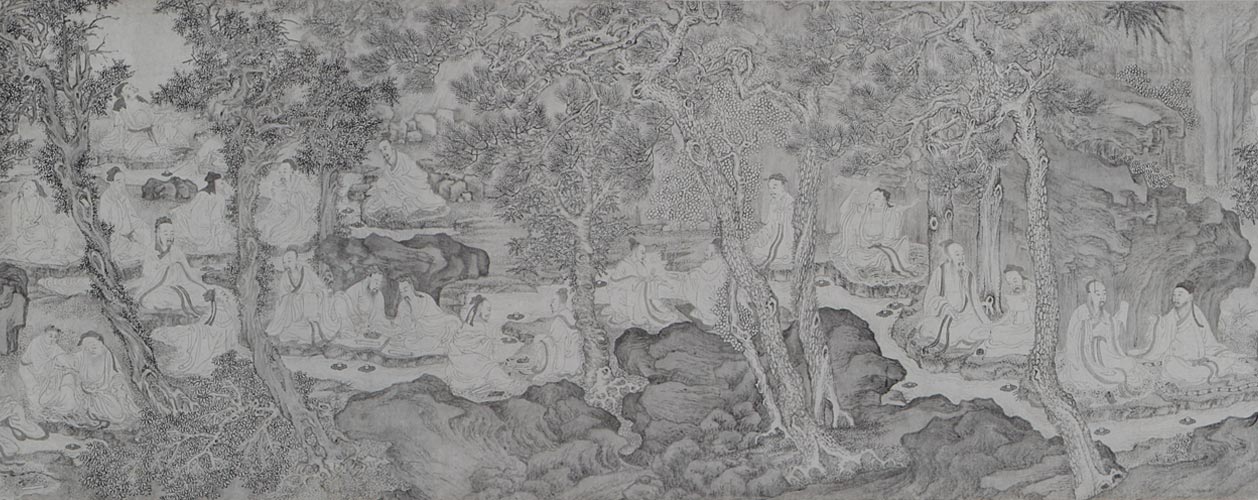
《曲水流觞图》Qu Shui Liu Shang, Ming dynasty, Huang Chen
Ink on paper, 29.8 cm x 252.4 cm
Now in the collection of the Palace Museum
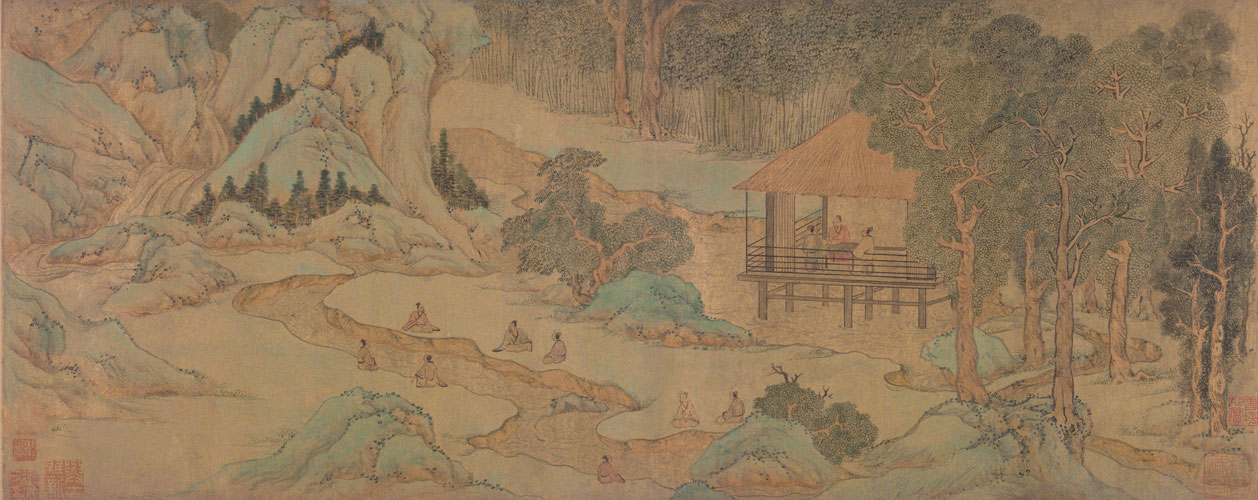
《兰亭修褉图》Xiuxi Ritual at the Orchid Pavilion, Ming dynasty (1542), Wen Zhengming
Ink and color on gold-dusted paper, 24.2 cm x 60.1 cm
Now in the collection of the Palace Museum
The tradition of Qu Shui Liu Shang remains even today. The Orchid Pavilion is a historical landmark where you can drink a cup of yellow rice wine, recite a poem and exchange reflections of the past.
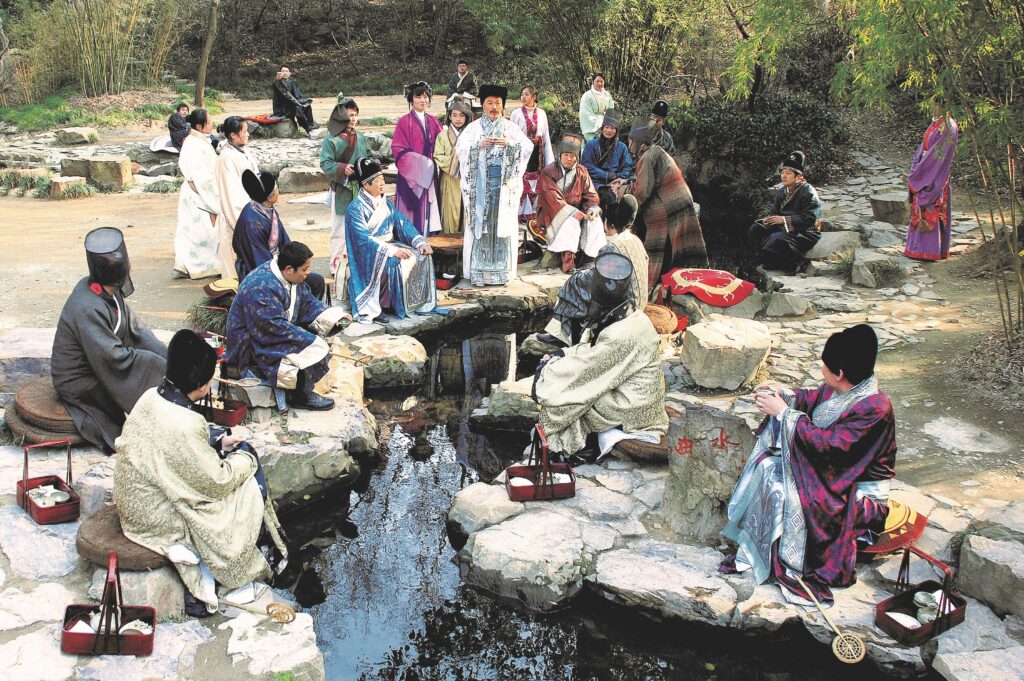
Sources:
http://www.ihchina.cn
http://www.shaoxingwine.com.cn
浙江省文化和旅游厅
绍兴市文化广电旅游局
北京市文化和旅游局
https://www.facebook.com/China-Cultural-Center-in-Stockholm-110983273921638
Instagram: chinaculturalcenterinstockholm
https://www.instagram.com/chinaculturalcenterinstockholm/
Tik Tok: cccinstockholm
@cccinstockholm
Wechat: 斯德哥尔摩中国文化中心 or scan the QR code below

